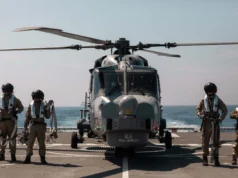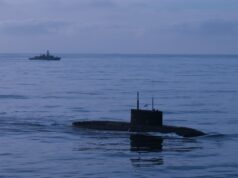The Dutch Ministry of Defence said the Russian ship Yantar was escorted out of the North Sea earlier this week after operating near vital maritime infrastructure in the Netherlands’ exclusive economic zone.
According to a ministry statement on 6 November, the hydrographic survey ship HNLMS Snellius and the patrol vessel HNLMS Friesland were deployed to monitor the Yantar, which was operating just outside Dutch territorial waters.
The vessel left the area on Tuesday afternoon under escort.
The Defence Intelligence and Security Service (MIVD) has warned repeatedly that Russian “research” vessels such as the Yantar could be used to map undersea cables, pipelines and other infrastructure. The MoD said Snellius was also assessing the condition of seabed systems in the same area.
“The Russian ship Yantar was operating earlier this week in the Dutch part of the North Sea, outside territorial waters. After monitoring by the Dutch navy, the ship left this zone under escort on Tuesday afternoon.
The MIVD (Dutch Defence Intelligence and Security Service) has been warning of Russian research vessels, including the Yantar, for some time. This well-known Russian ship could be deployed to map our maritime infrastructure. Earlier this week, the ship entered the North Sea. The navy then deployed HNLMS Snellius and HNLMS Friesland. While being escorted by the patrol vessel HNLMS Friesland, the Yantar left the North Sea. HNLMS Snellius is conducting research into the condition of the submarine infrastructure in the Yantar’s operating area.”
The Yantar is operated by the Russian Navy’s Main Directorate of Deep-Sea Research (GUGI), a branch responsible for subsea intelligence and special operations. Maritime tracking data showed the vessel almost stationary on 2 November near 53.8°N, 5.9°E, close to the Atlantic Crossing-1 and IOEMA fibre cable routes. The ship has appeared in similar areas before, near subsea data and energy links.
Recent images show new radomes installed on the vessel, suggesting possible upgrades to its surveillance systems. Dutch defence sources said that although the Yantar remained outside territorial waters, its proximity to undersea infrastructure warranted close monitoring.
This follows similar incidents elsewhere in Europe. In January, the Royal Navy tracked the Yantar through the English Channel with HMS Somerset and HMS Tyne maintaining watch.














Estimate range to target, “One Ping”.
its the problem when 70% of the world is covered by a lawless territory that anyone can use and exploit and we are increasingly reliant on data and energy cables that transact the “wild west”.
As Russia, its a failed sate with an increasingly useless military, it will increasingly seek to find actionable points like this that are outside the law in the same way a terrorist state would do to try and stay geopolitically relevant
We need to act in response, primarily by “inspecting” any ships heading to or from Russian ports on the Baltic via the North Sea.
hold them well we check insurance documents, safety standards and crew licenses.
this is the only kind of language Russia understands. Europe is holding all the cards, we should act now.
They probably know where everything is by now. How does nato respond to plausible deniability?